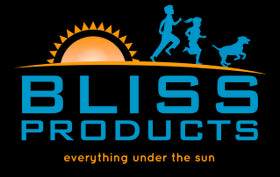When it comes to playground safety, one crucial aspect that should never be overlooked is fall surfacing. Playgrounds are designed to provide children with a space to run, jump, and play freely, but falls can happen. That's why having appropriate fall surfacing is essential to minimize the risk of injuries and create a safe play environment.
Fall surfacing refers to the material or surface beneath and around playground equipment that provides cushioning and impact absorption in case of falls. It acts as a protective layer, reducing the severity of injuries and ensuring the well-being of children. Let's explore the importance of fall surfacing and some popular options available.
Why is Fall Surfacing Important?
According to the Centers for Disease Control and Prevention (CDC), falls are the leading cause of playground-related injuries. To prevent severe injuries like fractures or head trauma, it's crucial to have proper fall surfacing in place. Here's why fall surfacing is important:
Impact Absorption: Fall surfacing materials are designed to absorb the impact of a fall, cushioning the landing and reducing the risk of serious injuries.
Trip and Slip Prevention: Fall surfacing provides a smooth and even surface, minimizing the risk of trips and slips that could result in injuries.
Accessibility: The right fall surfacing allows children of all abilities to access and enjoy the playground safely, ensuring inclusivity and equal play opportunities.
Compliance with Safety Standards: Fall surfacing materials must meet safety standards set by organizations such as the Consumer Product Safety Commission (CPSC) and the American Society for Testing and Materials (ASTM). Adhering to these standards ensures that the playground meets safety requirements.
Options for Fall Surfacing:
There are several options available for fall surfacing, each with its own advantages and considerations. Let's take a look at some popular choices:
Engineered Wood Fiber (EWF): Engineered wood fiber, also known as wood mulch, is a common and cost-effective option. It provides excellent impact absorption and is natural-looking. However, it requires regular maintenance to maintain adequate depth and prevent compaction.
Rubber Mulch: Made from recycled rubber, rubber mulch offers durability and impact attenuation. It provides a cushioned surface and comes in various colors, adding aesthetic appeal to the playground. Periodic replenishment may be necessary to maintain the desired depth.
Poured-in-Place (PIP) Rubber: PIP rubber surfacing consists of rubber granules mixed with a special adhesive, creating a seamless and customized surface. It offers excellent impact absorption, accessibility, and aesthetic options. While installation may require professional assistance and have a higher upfront cost, it offers long-term durability and minimal maintenance.
Synthetic Turf: Synthetic turf provides a natural look and feel, offering a cushioned surface for falls. It requires minimal maintenance compared to natural grass and can be a suitable option where grass is not feasible or desired.
Rubber Tiles: Interlocking rubber tiles are versatile and provide excellent impact attenuation. They offer a visually appealing and slip-resistant surface that can be customized with different colors and patterns. Rubber tiles are highly durable and require minimal maintenance, making them suitable for commercial playgrounds.
Considerations for Fall Surfacing Selection:
When selecting fall surfacing for your playground, consider the following factors:
Safety Standards: Ensure that the chosen material meets the impact attenuation standards set by the CPSC and ASTM. Compliance with these standards is crucial for providing a safe play environment.
Durability: Consider the durability and longevity of the material. Commercial playgrounds experience heavy use, so selecting a material that can withstand high traffic and weather conditions is essential.
Maintenance Requirements: Evaluate the maintenance needs of the fall surfacing option. Some materials may require regular replenishment or maintenance, while others have minimal upkeep requirements.
Accessibility: If your playground needs to be accessible to children with disabilities, choose a fall surfacing option that provides ease of mobility and meets accessibility guidelines.
Budget: Take into consideration the upfront cost and long-term expenses associated with the fall surfacing material. While some options may have a higher initial investment, they often offer greater durability and require less ongoing maintenance.
Installation and Maintenance:
Proper installation and regular maintenance are crucial for the effectiveness and longevity of fall surfacing. It's recommended to consult with professionals experienced in playground installation to ensure proper installation according to safety standards. Regular inspections should be conducted to check for wear, tear, or shifting of the material. Remove any debris or foreign objects that may compromise its performance, and maintain the required depth for adequate impact absorption.
Fall surfacing is a critical component of playground safety. By selecting the appropriate fall surfacing material and adhering to safety standards, you can create a play environment that minimizes the risk of severe injuries from falls. Consider factors such as safety standards, durability, maintenance requirements, accessibility, and budget when choosing the best fall surfacing option for your playground. With proper installation and regular maintenance, you can provide children with a safe and enjoyable space to play, explore, and create lasting memories.

